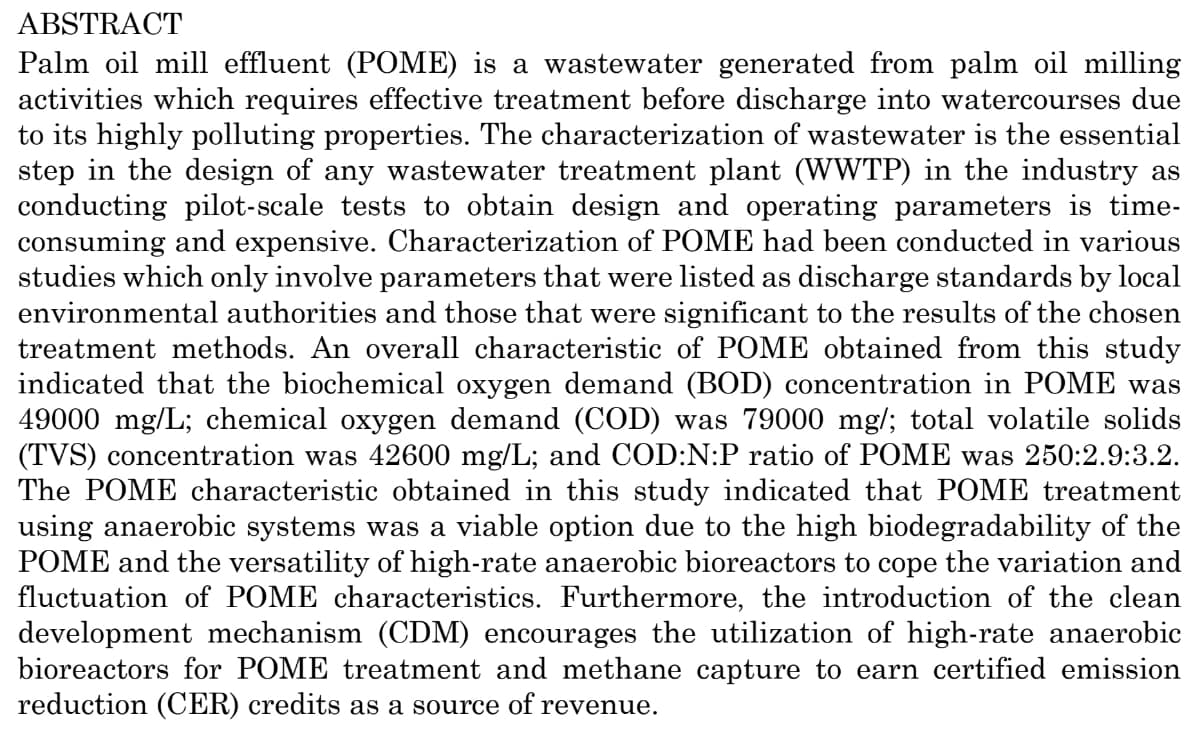Chapter14: Chromatography
Section: Chapter Questions
Problem 9P
Related questions
Question
Why does methane capturing is an important part of POME treatment?

Transcribed Image Text:ABSTRACT
Palm oil mill effluent (POME) is a wastewater generated from palm oil milling
activities which requires effective treatment before discharge into watercourses due
to its highly polluting properties. The characterization of wastewater is the essential
step in the design of any wastewater treatment plant (WWTP) in the industry as
conducting pilot-scale tests to obtain design and operating parameters is time-
consuming and expensive. Characterization of POME had been conducted in various
studies which only involve parameters that were listed as discharge standards by local
environmental authorities and those that were significant to the results of the chosen
treatment methods. An overall characteristic of POME obtained from this study
indicated that the biochemical oxygen demand (BOD) concentration in POME was
49000 mg/L; chemical oxygen demand (COD) was 79000 mg/; total volatile solids
(TVS) concentration was 42600 mg/L; and COD:N:P ratio of POME was 250:2.9:3.2.
The POME characteristic obtained in this study indicated that POME treatment
using anaerobic systems was a viable option due to the high biodegradability of the
POME and the versatility of high-rate anaerobic bioreactors to cope the variation and
fluctuation of POME characteristics. Furthermore, the introduction of the clean
development mechanism (CDM) encourages the utilization of high-rate anaerobic
bioreactors for POME treatment and methane capture to earn certified emission
reduction (CER) credits as a source of revenue.
Expert Solution
This question has been solved!
Explore an expertly crafted, step-by-step solution for a thorough understanding of key concepts.
Step by step
Solved in 2 steps

Knowledge Booster
Learn more about
Need a deep-dive on the concept behind this application? Look no further. Learn more about this topic, chemistry and related others by exploring similar questions and additional content below.Recommended textbooks for you

